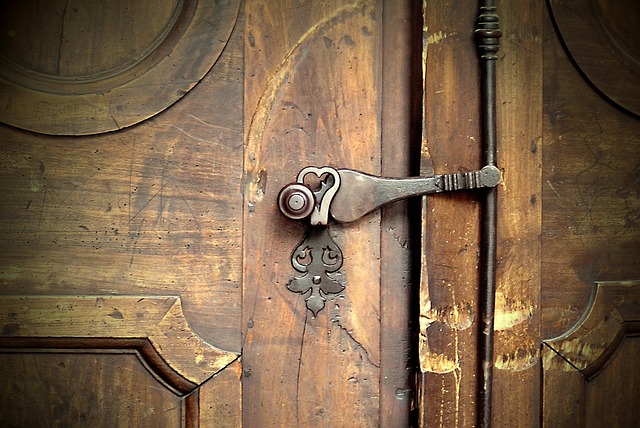Insulated doors offer a cost-effective, sustainable solution by combining energy efficiency and durability, reducing replacement needs and waste. Advanced materials resist wear and tear, enhancing lifespan and maintaining aesthetics. Low-maintenance finishes, including self-cleaning exterior coatings, contribute to eco-friendly design trends, saving costs and minimizing environmental impact.
In today’s fast-paced world, frequent home renovations can strain budgets and disrupt lives. Understanding the cost impact of regular replacements is a crucial first step. This article explores low-maintenance finishes that offer sustainable solutions, reducing the need for repeated investments. From insulated doors, known for their longevity, to popular finishes for diverse surfaces, we delve into case studies showcasing successful transformations. Additionally, we forecast future trends predicting even lower replacement needs.
Understanding Frequent Replacement Costs and Their Impact
Frequent replacements of finishes can significantly impact your budget and contribute to waste. Understanding the cost of replacing common elements like doors, especially insulated ones, is a crucial step in choosing low-maintenance alternatives. Insulated doors, for instance, offer not only energy efficiency but also long-lasting durability, reducing the need for regular swaps. By opting for finishes that are designed to withstand everyday wear and tear, you can save on material and labor costs associated with frequent replacements.
The Role of Insulated Doors in Long-Lasting Solutions
In the pursuit of low-maintenance finishes that extend lifespan and reduce replacement needs, insulated doors play a pivotal role. These doors are designed with advanced materials and technologies that offer superior durability, preventing wear and tear often associated with regular door models. The insulation not only enhances energy efficiency by reducing heat transfer but also acts as a protective barrier against environmental factors like dust, pests, and extreme weather conditions, thereby slowing down the aging process of the door.
By integrating insulated doors into various settings, from residential to commercial spaces, the need for frequent repairs or complete replacements is significantly mitigated. This longevity not only saves costs for property owners but also contributes to a more sustainable approach to construction and renovation by reducing waste from discarded doors.
Popular Low-Maintenance Finishes for Various Surfaces
In today’s fast-paced world, low-maintenance finishes for various surfaces have become a game-changer in interior design and home improvement. One notable example is the growing popularity of insulated doors, which not only enhance energy efficiency but also require less upkeep compared to traditional door options. These doors are designed with advanced materials that resist scratches, stains, and fading, ensuring they maintain their sleek appearance over time.
Other low-maintenance finishes include high-performance paints and coatings tailored for specific surfaces like walls, cabinets, and floors. These products offer durability against wear and tear, making them ideal for busy households or commercial spaces. Additionally, textured finishes and specialized seals can protect outdoor surfaces from harsh weather conditions, reducing the need for frequent repairs or replacements, especially in insulated structures like homes or offices with energy-efficient features.
Case Studies: Success Stories of Durable Finishes
In the realm of low-maintenance finishes, several case studies stand out as success stories, offering valuable insights into longevity and durability. One notable example is the adoption of insulated doors in both residential and commercial settings. These doors are designed with advanced materials that not only provide superior insulation but also withstand heavy use without requiring frequent replacements. Studies have shown that well-maintained insulated doors can last for over a decade, significantly reducing the environmental impact and saving costs associated with regular door replacements.
Another inspiring narrative involves exterior wall finishes that incorporate self-cleaning technologies. These innovative solutions utilize nano-coating techniques to repel dirt, moisture, and stains, ensuring the finish remains pristine for extended periods. Case studies from various regions highlight the effectiveness of these coatings in harsh climates, proving their durability and ease of maintenance. By emulating nature’s strategies, these finishes offer a revolutionary approach to low-maintenance construction, fostering a more sustainable built environment.
Future Trends: Predicting Reduced Replacement Needs
As we move towards a future focused on sustainability and efficiency, the trend in finishes is also evolving. One prominent area of interest is the development of materials that offer superior durability and insulation properties. Insulated doors, for instance, are gaining popularity due to their ability to reduce heat transfer, lower energy consumption, and decrease the need for frequent replacements.
This shift towards eco-friendly and high-performance finishes is not only beneficial for homeowners but also contributes to a broader goal of minimizing waste and environmental impact. With technological advancements, we can expect to see more innovative solutions that combine aesthetics, functionality, and longevity, thereby reducing the reliance on regular upkeep and substitutions in various aspects of our living spaces.
In conclusion, adopting low-maintenance finishes and solutions like insulated doors can significantly mitigate the costs and environmental impact associated with frequent replacements. As we look towards the future, trends suggest that these innovative approaches will play an increasingly vital role in enhancing durability and reducing waste. By exploring popular low-maintenance finishes and leveraging case studies, homeowners and businesses alike can make informed decisions to create lasting spaces that stand the test of time.
